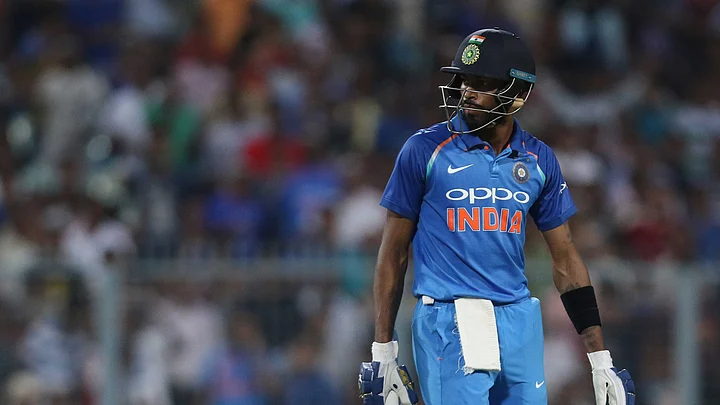Hardik Pandya and Bhuvneshwar Kumar at the crease. India’s score at 233/6 at the start of the 48th over.
Three balls in and the heavens opened up. However, Kane Richardson had already rolled his arm for the fourth delivery.
Batting on 19, Pandya hit the waist high full-toss straight into a waiting Steve Smith’s hands at cover. Pandya thought he was out and with the rain pouring by this time, he started walking back to the pavilion. Smith though realised that the ball could be judged a no ball and, for precaution, also dislodged the bails, for a run out call.
However, no umpire on the field signalled a wicket as the full toss was indeed judged to be waist-high. Pandya was given not out. The run out too did not count as the umpires called it dead ball by then.
The umpires went by the book on this occasion and awarded a free hit to the batting side.
Clause 27.7 of MCC Laws: Batsman Leaving his Wicket Under a Misapprehension
An umpire shall intervene if satisfied that a batsman, not having been given out, has left his wicket under a misapprehension that he is out. The umpire intervening shall call and signal Dead ball to prevent any further action by the fielding side and shall recall the batsman.
Citing that Pandya had mistakenly walked off after thinking he was caught, the umpires gave the benefit of doubt to India and allowed Pandya to return to the crease, after the rain.
(With inputs from PTI)
(At The Quint, we question everything. Play an active role in shaping our journalism by becoming a member today.)
